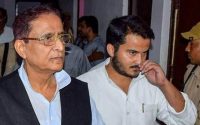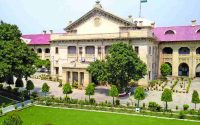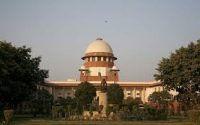The Curious Case of the 1,045-Page Ayodhya Judgment With Its Mystery Author and Dissenting Opinion.
Source – news18.com
New Delhi: Apart from the order itself, two features of the judgment delivered by the five-judge bench in the Ayodhya title dispute have stood out. First, it does not specify the name of the judge(s) who authored the judgment. And secondly, the unanimous judgment does not mention the name of the judge who dissented on the issue of the exact birth-place of Lord Ram.
Both of these facts about the order may be considered a major departure from the norm, especially in such a high-profile case.
The established practice is to specify the name of the judge who has authored the judgment on behalf of a bench. The reason behind the decision to not mention the name of the author of the 1,045-page judgment is not clear. However, it may have resulted out of the sensitivity of the case.
The matter was heard by a five-judge bench led by Chief Justice Ranjan Gogoi. CJI-designate Justice S A Bobde and Justices DY Chandrachud, Ashok Bhushan and Abdul Nazeer were the others on the bench.
The other curious fact is that the judgment carries a 116-page addendum, which explains why the disputed place is the birthplace of Lord Ram as per the faith and belief of Hindus. Even the author of this addendum remains a mystery.
There was one judge who dissented on the issue of birthplace. The judgment has at the very end of the order a line that states, “One of us, while being in agreement with the above reasons and directions, has recorded separate reasons on: ―Whether the disputed structure is the birth-place of Lord Ram according to the faith and belief of the Hindu devotees. The reasons of the learned judge are set out in an addendum.’
In the Allahabad High Court verdict of 2010, the specific questions like the birthplace of Lord Ram or whether a temple was destroyed to create the mosque which was subsequently demolished on December 16, 1992, were mentioned categorically with the opinion of each judge stated clearly.
Even in recent Constitution Bench cases like Aadhaar and right to privacy, views of each of the judges on the bench were clearly stated and some of the judges were found to be differing and in minority from the other judges.
In its unanimous 5-0 verdict, the SC ruled that the disputed 2.77 acre land in Ayodhya will be handed over to a trust formed by the central government for the construction of a Ram Temple.
The five-judge bench led by Chief Justice Ranjan Gogoi ruled that Hindus will get land subject to certain conditions, and directed the Centre to allot an alternative 5-acre plot to the Sunni Waqf Board for building a new mosque at either a “prominent” place in the holy town in Uttar Pradesh or in the 67 acres surrounding the disputed site that were acquired by the government in 1993.
This, the top court said, was “restitution” for the unlawful destruction of the Babri Masjid.



